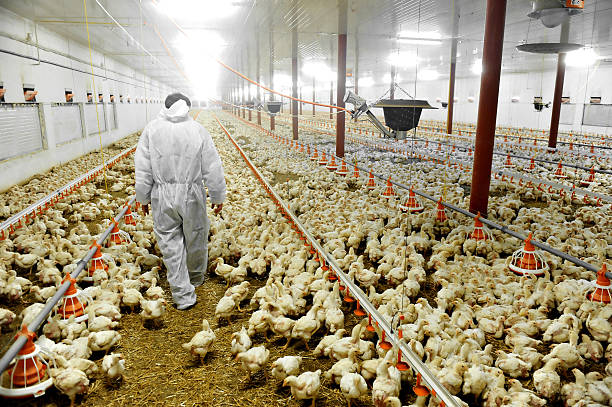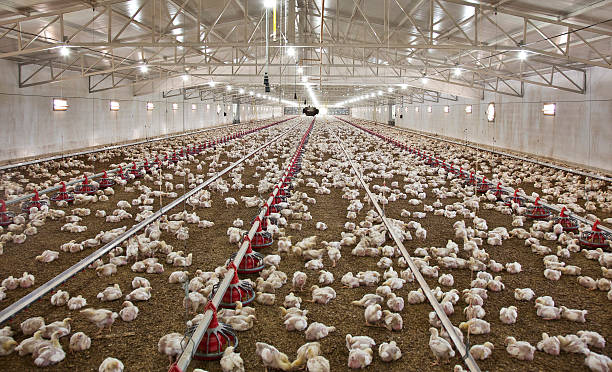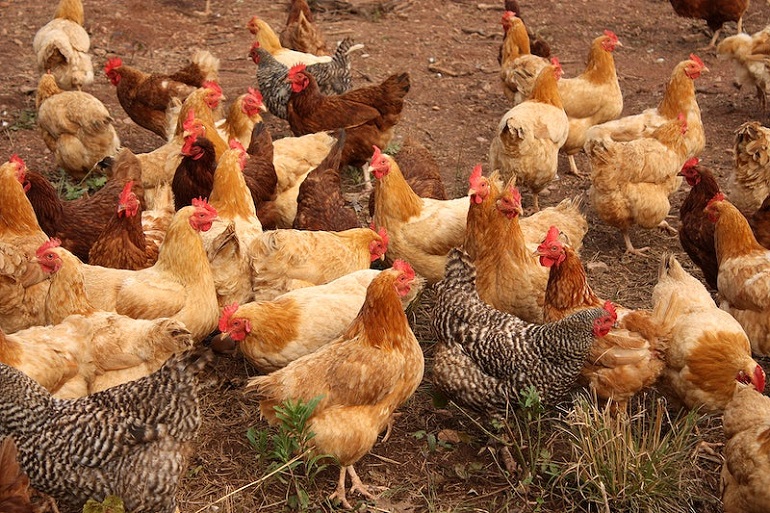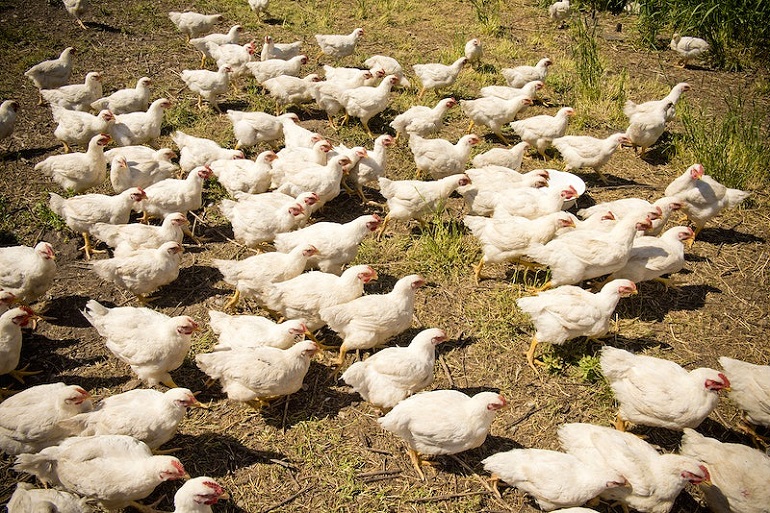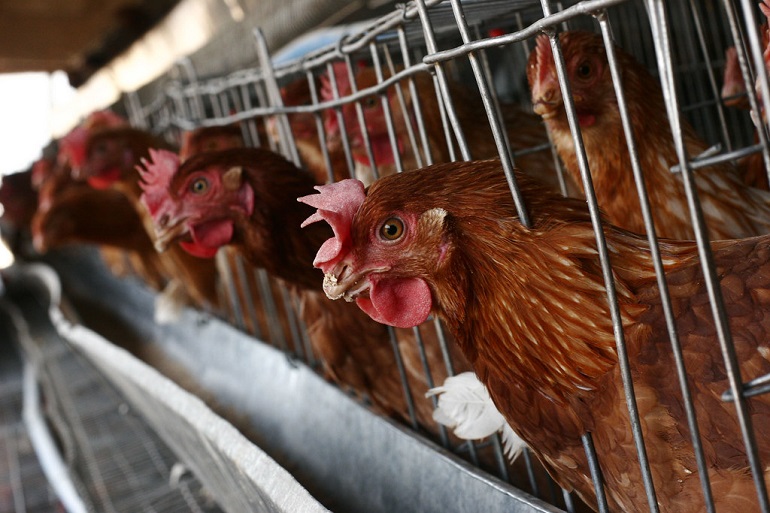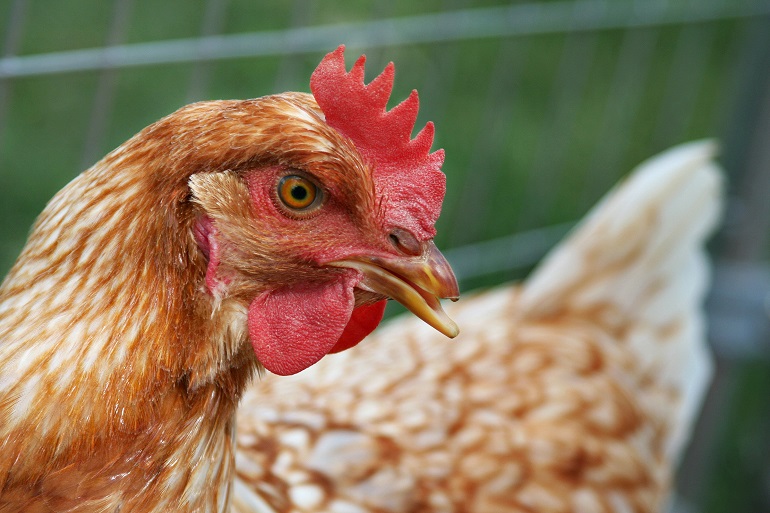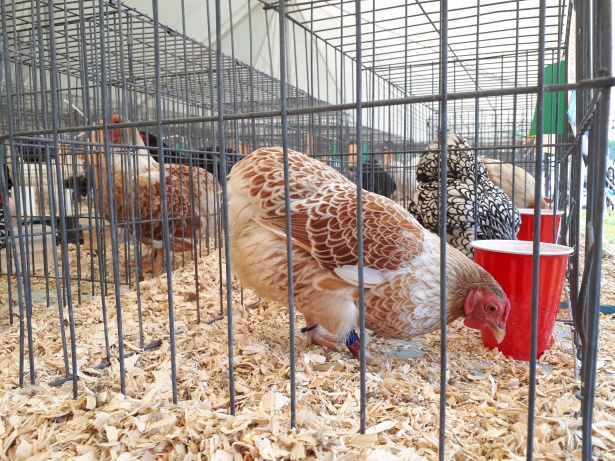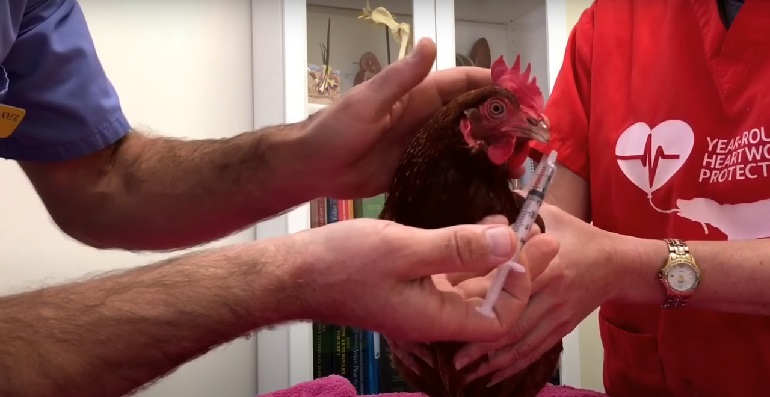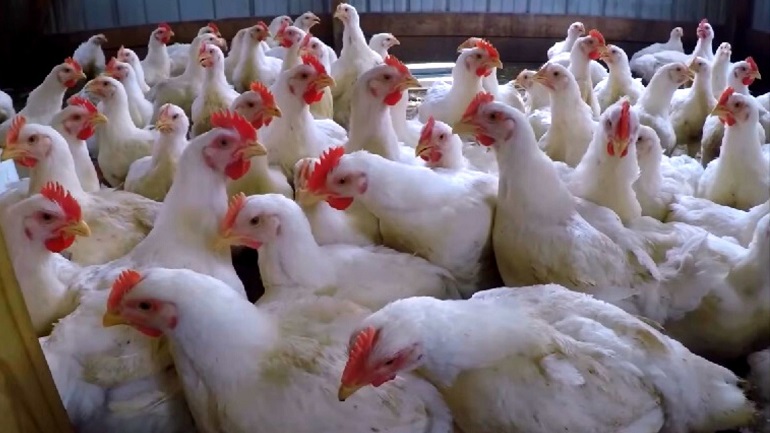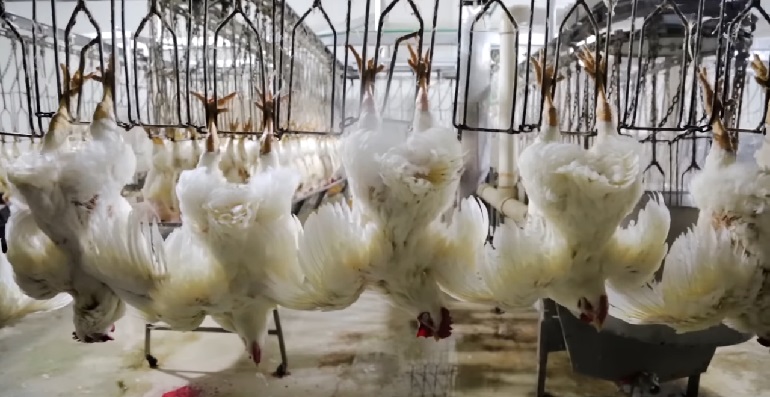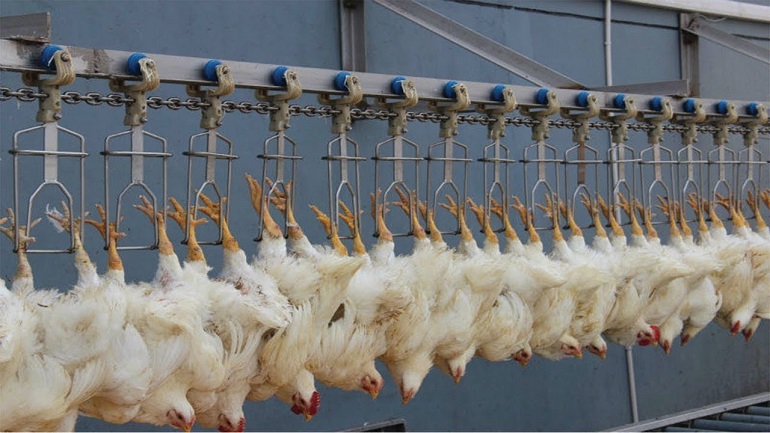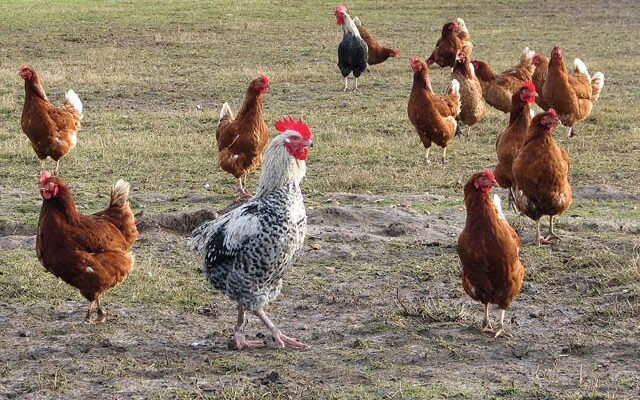Behind the neatly packaged chicken in your supermarket lies a grim reality: the chicken factory farm. These industrial facilities prioritize profit over animal welfare, confining thousands of birds to cramped, unsanitary spaces. This investigation unveils the disturbing truth about these factory farms, revealing the horrific conditions chickens endure, from debilitating health issues caused by rapid growth to the agonizing practices employed during slaughter. Prepare to confront the unsettling details of a system that prioritizes cheap meat over compassion and ethical treatment. The suffering is immense, and the need for change is critical.
Originally published on February 13, 2023, this article has been updated on October 21, 2023 to reflect the latest research and statistics. Our editorial team has ensured you’re viewing the most current data on this topic. Need help or have a question? Email us.
The world is a hungry place, and one of the most affordable forms of animal-based protein is chicken meat.
To meet the need for meat chicken, factory farming has evolved, where chickens are raised for meat and egg production in record times while welfare concerns are placed on the back burner.
A visit to a local chicken factory farm left me in tears, and here’s why.
Chicken Factory Farming
Chicken factory farms operate on two systems: battery cages stacked from floor to ceiling with up to four chickens stuffed inside to lay eggs or a larger pen system where pullets are raised for meat. Still, thousands of chickens are crowded into a tiny space where the chickens can’t move much and don’t see (much) daylight at all.
To say that factory farms are cruel is an understatement, and sadly, poultry has the least protection from abuse of all farmed animals. Where other farmed animals, such as cows and other livestock, have protection against stress from the slaughterhouse, chickens can be slaughtered in any way that seems most effective.
The manner in which chickens raised for meat are fed and medicated also causes massive concern. Let’s consider a few statistics that will raise your hair and churn your stomach (#HardTruthsHurt).
Factory Farmed Chickens Statistics
There are 25,000 factory farms that raise chickens in the US. These farms cram birds into battery cages the size of a printer page. Four birds are packed into a cage, leaving no room to move, much less open their wings.
Chickens are fed a high-protein diet with little concern for their long-term health as long as the feed produces sufficient weight gain in the 40 days before a broiler chicken is slaughtered. Each of these 25,000 factory farms slaughters over a thousand birds per day to meet the growing need for animal protein.
Layer hens are no better off, and if their egg production drops below profitable levels, the hens are slaughtered.
Larger eggs are also more profitable, so egg size is increased via a specialized diet and selective breeding. The result is that the layer hens suffer fractured sternums as a result of the pressure of laying such large eggs each day. Can you imagine the pain of this fate?
How Chickens Are Raised in Factory Farms?
The manner in which chickens are raised in factory farms reflects appalling conditions. Chickens live in their own waste, with many suffering chronic pain from harmful practices that are routinely performed at these facilities.Weak chicks are culled, ground up (sometimes while still alive), and fed to their living brothers and sisters as a blood meal (for a protein boost).
The intensive farming methods have little concern for animal welfare and, instead, promote animal cruelty.
It’s all about how much space can be saved to increase profit. Factory farm owners calculate how many birds they can squeeze into battery cages and how fast chickens can be raised so they can be slaughtered—freeing up more space for the next batch of pullets to be raised.
Layer Hens
America has a total of 1.5 billion chickens, of which 379 million are layer hens, and these hens will never see their offspring or raise their own chicks.
Instead, egg production dominates, and these hens are tricked with artificial light to believe that time has passed faster so they can lay more eggs in a shorter period of time. Where a regular chicken will lay about 20 eggs per year, a factory-farmed hen will lay as many as 300 eggs a year.
The fast growth rate of eggs due to the calcium-rich diet the hens are placed on causes larger-than-normal egg production. Often, the hens suffer serious physical injury to lay eggs that are too big for their bodies until they are considered useless when they can’t continue laying many eggs any longer.
Broiler Chickens
Chickens raised for meat are called broiler chickens, and where chickens took 120 days to reach four pounds of weight at the start of the 20th century, they now reach four pounds in as little as 40 days. I was shocked to learn that a chicken only lived for six weeks (or fewer) before being sent to the slaughterhouse.
What’s worse, broiler chickens are raised as a food source, not as sentient animals at all. Not only are they killed, but broiler chickens suffer terribly during the slaughter process. Most don’t have any choice in meeting a painful end.
Industrial farms forget they are working with livestock, not inanimate objects. Whether in the egg industry or as part of the meat sector, chickens should be afforded dignity and the right to live cage-free and normal lives, breathing fresh air and raising their young.
Why Is Factory Farming Bad?
Industrial farming (aka factory farms) has become the norm as animals are no longer grown or raised but rather produced in concentrated animal feeding operations (CAFOs).
Aside from providing very little space for the animals produced there, animal cruelty and abuse are the other major concerns affecting factory-farmed chickens.
Cruelty to Chickens
Since the law doesn’t protect modern chickens raised in industrial farms, these birds are denied basic instinctual behavior in actions by the major companies that run these factory farms.
The methods used to produce eggs and meat as quickly and as cheaply as possible prevent chickens from living pain-free lives. Cruel treatment from the moment they are hatched until they are slaughtered is the norm of the day.
Separation from Parents
Eggs aren’t hatched by the layer hens and are instead hatched in an industrial hatchery, which produces tens of thousands of pullets (immature chicks) that are sold from a young age as a day-old chick.
Most of these chicks remain at factory farms, where they are fattened up at speed for slaughter. Hens are stuck into a battery cage, four birds at a time, while roosters are often slaughtered as soon as they hatch since roosters aren’t the best broiler chickens.
It’s mass production of the worst kind!
Debeaking
Chickens tend to peck at each other in frustration from being cooped up in small battery cages, so it’s standard practice to remove the sharp part of the chicken’s beak, which is a process where the chickens’ beaks are manually and painfully removed by a machine.
The procedure eliminates pecking, but it does nothing to address the stress that causes it and leaves the chicken in chronic pain.
Chickens Are Abused
The humans that work at the factory farms have a quick schedule to follow, so there is little time to work with awareness of the birds’ needs. At a rate of a thousand or more birds slaughtered per day at each of the factory farms, abuse happens (whether intentional or not).
The process of catching chickens to be transported to the slaughterhouse is traumatic, and many birds are injured, some suffering broken bones. Each bird is considered a source of food, not a sentient being.
Restrained into Battery Cages
Egg-laying hens are usually crammed into a battery cage, where they will produce eggs for the rest of their days until their production drops and they no longer make the factory owners money. Then they will be slaughtered.
The battery cages are filled with dirt, and salmonella will quickly spread on the chickens and eggs, killing hundreds of Americans each year.
The hens will also suffer severely as the calcium needed to produce so many eggs’ shells is taken from their bones, leading to osteoporosis and broken bones.
Genetic Manipulation
Using selectively bred chickens, the factory farms produce larger, more meaty birds with a high meat-to-bone ratio that can be slaughtered at a younger age when they reach their goal weight. Sadly, this causes unnatural-looking chickens that are raised as broiler chickens.
Deformities and Diseases
To combat the deformities and diseases that spread due to the enclosed environment and genetic manipulations, broiler chickens and layer hens are dosed almost daily with antibiotics and growth hormones.
Weak chicks are instantly killed, ground up, and fed to the living as a way to recycle the protein and calcium in their bodies. Of course, this leads to the further spread of disease.
Are Factory Farmed Chickens Bad for Health?
Free-range chickens live a life that allows their natural development, but factory farms produce unnatural chickens, which offer toxin-laced meat and contaminated eggs.
Misuse of Antibiotics
Where antibiotics should only be administered as a curative medication, these factory farms administer it daily, and not only to ill birds. This results in antibiotic-resistant bacteria that develop in people who consume the flesh and eggs produced at these facilities.
Thousands of people die each year as a result of antibiotic resistance.
Impact on Environment
Factory farms produce a massive amount of runoff that contaminates streams and rivers. The removal of the waste and carcasses generated by these facilities often leads to huge environmental issues and pollution.
The Economies of Rural Communities
While some jobs are created by these factory farms, the fact is these facilities don’t enrich the local economies.
Instead, they can be a drain on the local power grid, cause issues for the local municipal councils that have to clean up and inspect the facilities, and when disease breaks out, these factory farms instantly fire their employees.
Time Period to Raise a Chicken
Where chickens used to take 120 days to reach a goal weight of 4-4.5 pounds, it is now accomplished in 42 days or less. This massive growth change is partly due to selective breeding and also to the high-protein diets that chickens are fed daily.
Male chicks are often killed at birth since male chicks don’t produce as much meat as female broiler chickens do.
Lifespan of Factory Farmed Chickens
Factory-farmed chickens are slaughtered at a frightening rate. US slaughterhouses kill around 9 billion chickens each year. The average broiler chickens live 40 days each, while layer hens have a life expectancy of 18 to 24 months or somewhere around one to three years.
A chicken can live as long as 5-8 years on a free-range farm.
How Do They Kill Chickens?
The methods considered humane for killing chickens are hardly cruelty-free.
Chickens are killed using a live shackle method, where they are hung upside down with their legs fastened in metal shackles. The chickens are dipped in electrified water, which is supposed to stun them into unconsciousness.
Their throats are then cut, and the chickens are dumped into a bath of boiling water to loosen their feathers for plucking.
Many chickens aren’t unconscious when their throats are cut, and some haven’t fully bled out and are, therefore, broiled alive.
Chicken Slaughterhouse
A chicken slaughterhouse is a place of pain, and there simply is no humane option when animals are processed as food at such a rate. The stress suffered by the animals also affects some of the humans working at the slaughterhouse, and many suffer severe depression when they see what these animals have to endure.
Can you imagine having to do the job where birds are dragged out of battery cages and then hanged from their legs before being electrocuted and their throats cut? It’s the stuff of nightmares.
Picture slaughtering chickens in this grotesque manner a thousand times each day.
Free Range Chicken
Free-range chicken farming is a more humane method of raising chickens. The chickens aren’t kept in battery cages, and they get to live a life of more freedom as they move around in larger pens and chicken runs. This method is more in line with what life is supposed to look like for the species.
Industries trade on producing chicken meat and eggs as fast as they can with no concern for the way this affects the animals or how factory-farmed chicken affects human health. It is possible to raise chickens without abusing their bodies before they are killed.
Human treatment can produce healthy animals that don’t need to face such torture as debeaking and life-shackle slaughter.
What You Can Do to Stop Industrial Chicken Farming
So, how do you go about stopping the cruelty? There are a few things you can do:
- Buy free-range chickens that are raised organically and cage-free.
- Buy local chickens to stop the pain of being transported thousands of miles to slaughterhouses.
- Pursue lobby lawmakers to close local factory farms as these pose a risk to public health and can create lung problems due to pollution.
- Support the efforts of The Humane League and other animal welfare organizations.
FAQ’s
How Can the Suffering of Chickens Be Measured?
Chickens can’t speak about the pain they suffer, but they have the same neural pathways as other animals (including humans), and they do scream in pain. Would you want to be debeaked? How about being strung up and electrocuted and then decapitated? Then why treat chickens that way?
Can Factory Farming Become Humane?
More humane methods can be introduced, but less intensive farming practices would be required to reduce the stress and suffering that the animals experience.
How Does the Chicken Industry Work?
Chickens are bought by the thousands as day-old pullets, which have been hatched in an industrial hatchery. These are raised for meat, with a few specific breeds kept as layer hens.
The chickens are fattened up as quickly as possible, usually being slaughtered at 40 days of age. The goal is to produce tons of meat for human consumption, with no regard for human health or animal welfare.
How Many Eggs Do Factory Chickens Lay?
Factory chickens lay at least an egg a day. Once a hen’s productivity or egg-laying capacity is reduced (between one and three years of age), she is slaughtered. The record for eggs laid in one day by a single hen is seven eggs, but the average is over 300 eggs per year.
Conclusion
A chicken may only be a bird, but they are sensitive animals that have the capacity to feel, sense emotions, and show concern for their young. Factory farming is cruel as it denies chickens the basic instinctual behavior they need to fulfill to feel calm and happy.
At factory farming, a hen will never raise her chicks, chickens won’t enjoy dust bathing, and most chickens will suffer beak trimming without sedation or pain medication. Rural communities don’t benefit nearly enough to justify the continued use of factory farms.
Chicken factory farming prioritizes profit over animal welfare, creating a system of immense suffering. Cramped, unsanitary conditions, rapid growth-inducing hormones, and mutilations like beak trimming are standard practice. These sentient creatures live short, miserable lives devoid of natural behaviors. While this efficiency model provides cheap meat, consumers must confront the ethical implications of supporting such a cruel industry. Exploring alternative, humane farming practices and reducing meat consumption are crucial steps towards a more compassionate food system.


